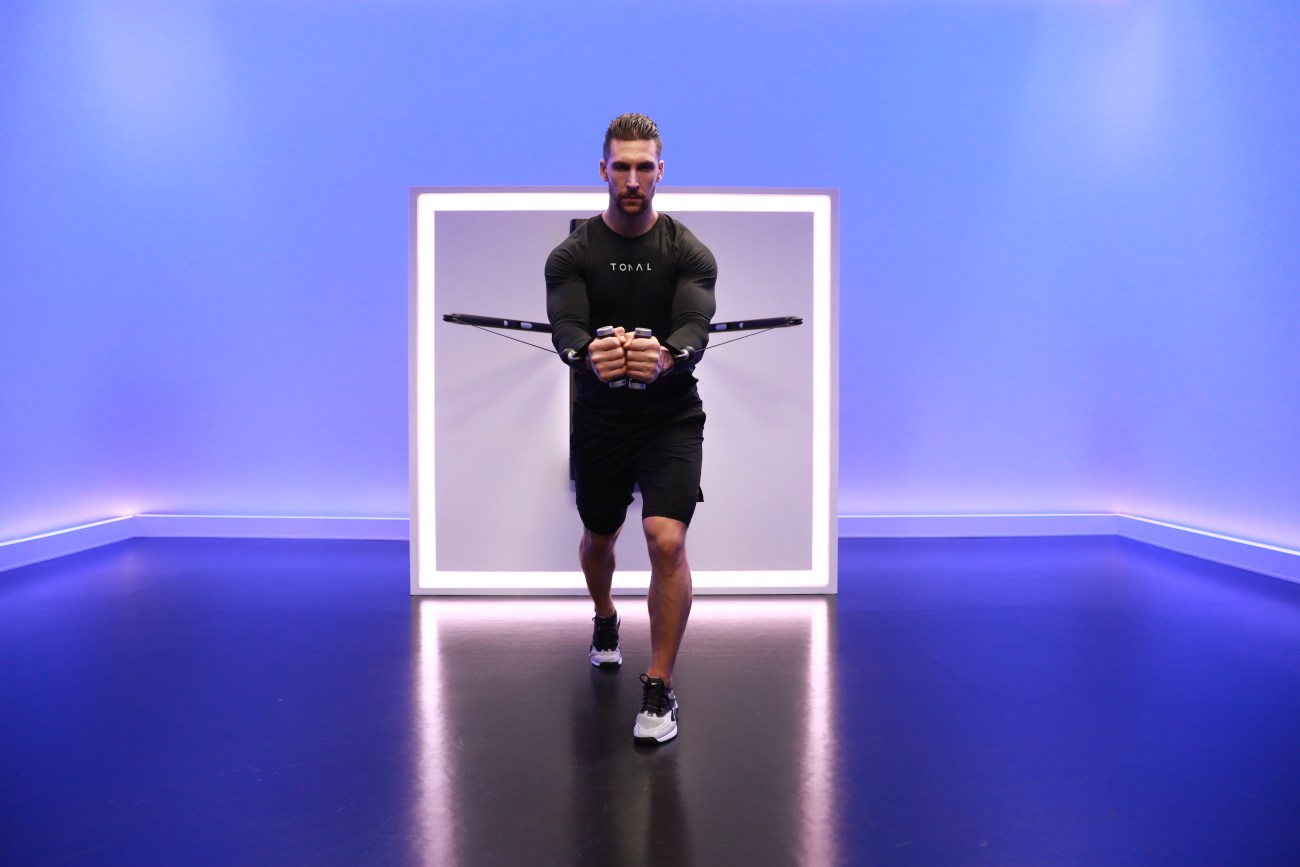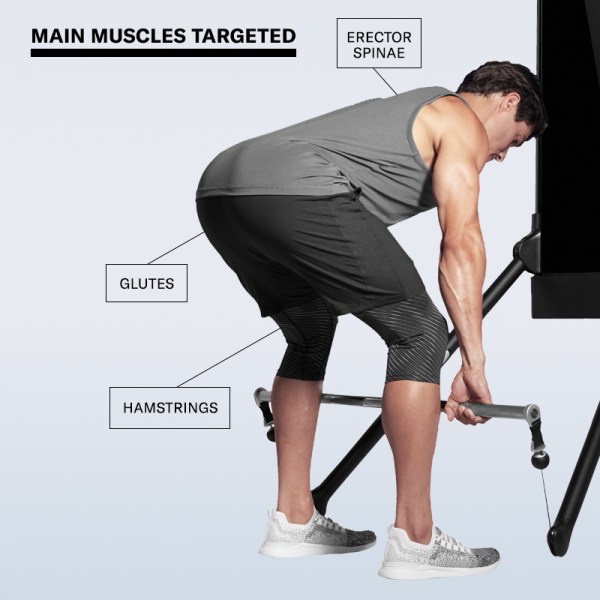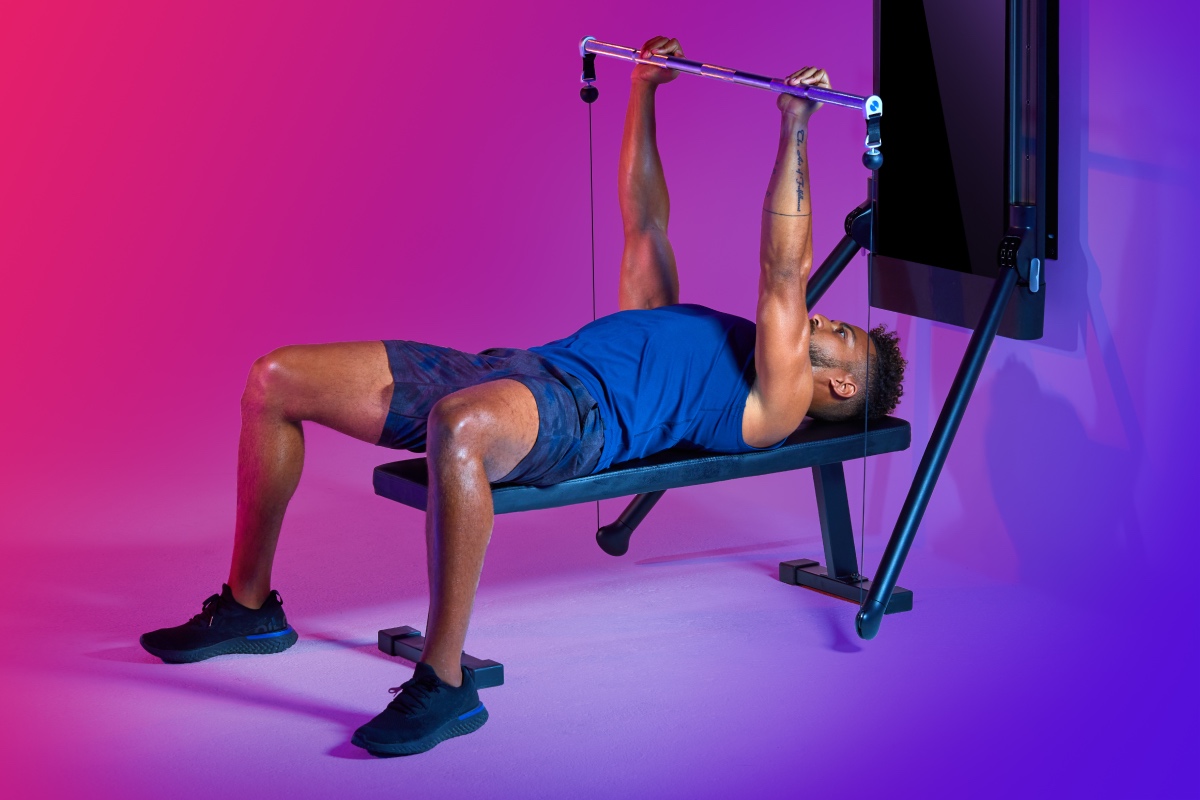Accessory work accounts for 80 percent of his lifts. Here’s why he recommends it.

This summer, Tonal coach Joe Rodonis confessed something on Instagram that may have surprised even his most loyal followers: Accessory work accounts for over 80 percent of his lifts.
Part of the surprise was that Rodonis doesn’t spend the majority of his workout time doing deadlifts, squats, cleans, and other “big lifts.” So what is accessory work and why does it matter so much that a seasoned trainer like Rodonis spends so much time on it?
“Accessory work is the training we do to target our ‘smaller’ or supporting muscles for our compound or ‘main’ lifts,” Rodonis, a certified personal trainer and health coach, explains. Those main lifts—squats, bench presses, and deadlifts—are compound movements most commonly known as “The Big Three.” They can also incorporate other movements such as power cleans and overhead presses.
To improve performance on those major lifts, it’s important to strengthen the muscles that support those big movements—even if they’re not considered the stars of the show.
“As we lift, and especially as the weight increases, we will notice weaknesses or places where a supporting muscle cannot accommodate the load we are lifting,” Rodonis says. “That’s where we tie in our accessory work, to target weaknesses and build up our supporting muscles. The stronger our accessory lifts, the stronger our main lifts.”

How much time should be dedicated to accessory work?
The logic behind accessory work makes sense, but some may still be stunned to discover Rodonis spends the majority of his workouts focused on these more nuanced moves. His regimen involves a 45- to 90-minute session in which he does one main lift, and focuses 80 percent of his time on the accessory muscles.
“This is a guideline, we don’t have to be perfect with the split, but we can use it as a structure,” he says. “I like to program one main lift during each session; that’s my main focus of the day.”
For example, if Rodonis is building a workout around the bench press, he might do four to five sets of that exercise, dedicating the rest of his session to accessory movements that help him execute that big lift, like triceps extensions, chest presses, incline presses, and seated rows.
“You’ll notice the benefits of accessory work fairly quickly,” he says. “You are identifying weaknesses and addressing them in real time.”
Why incorporate accessory work?
If you’re still not seeing the value in investing in accessory work, Rodonis offers some more context on how it can go a long way in improving overall fitness.
“Our main lifts serve as a point of reference to measure our progress,” he says. “Each time we increase weight on these lifts, we get to analyze our form and identify weak points. When we see the weak point in a lift, it gives us information to know exactly what to work on in our accessory work.”
Rodonis distills three major reasons to start showing accessory muscles more love:
- Push past plateaus. “You will eventually hit a ceiling or plateau on your main lifts,” Rodonis says. Accessory work allows you to focus on each supporting muscle to strengthen your foundation.
- Break from high-impact work. “Main lifts take a lot of energy and can have a heavy impact,” Rodonis says. “Doing this alone can take a toll on the body. Accessory work allows the body to recover, while also getting stronger. We need varying degrees of intensity in our training—not every day should be a beat down.”
- Correct imbalances and improve strength. Accessory work can help you strengthen the weak points in your lifts, ultimately making you a better lifter and helping you avoid injury.
“For example, in a back squat, as the load increases, the lower back needs to be strong enough to support the load,” Rodonis explains. “If it’s not, you’ll commonly see a lifter’s weight distribution fall forward because it simply cannot support the increase in weight. Maybe one side of your body is stronger than the other. We can do unilateral training to address each side individually in an effort to create continuity.”
Which accessory exercises complement the main lifts?
There are countless examples of accessory exercises that can help you get stronger for your main lifts, but Rodonis says there are a few key players worth getting to know super well. “The point is, for any weakness you experience in a lift, there is a way to address it,” he says. Here are some of his favorites:

When should you do accessory exercises?
Every exerciser has unique needs that are specific to their body, training experience, and goals, but spending at least some part of your regular workout schedule on accessory exercises can transform your performance.
“The schedule you follow and the movements you incorporate are completely based on your goal and what you plan to focus on,” Rodonis says. “The accessory movements are your tools to help you grow in a defined area.”
For fitness enthusiasts who just want to build strength and stamina, Rodonis recommends structuring each strength session around one main lift (bench, deadlift, or squat). “Do three to five sets of the main lift and incorporate four to eight complementary accessory movements, doing three to four sets of each movement,” he says.
“A huge advantage with Tonal is being able to introduce dynamic weight modes to any lift,” Rodonis adds. “This is something professional lifters do and the set-up can be difficult. To have that available on our accessory lifts is incredibly uncommon and a huge advantage for even the most advanced lifter.”
Tips for accessory work
Keepthe following in mind when doing accessory work so you stay safe and actually move toward achieving your goals.
- Make sure your training is focused and progressive. “The accessory work you do should complement your main lifts, addressing weaknesses you’ve noticed and continuing to build your strengths,” Rodonis says.
- Go back to basics. “I often see people trying more advanced moves when they haven’t mastered the basics,” Rodonis says. “Keep things simple and gradually progress.”
- Incorporate progressive overload. “Your work levels need to advance or you won’t,” Rodonis says. “Track your volume each session with a goal of increasing gradually.”
- Stay consistent. “It’s true that we need variation at times to avoid the law of accommodation,” Rodonis says. “But switching your focus every week takes you back to exercising, not training. You need time for the body to adapt, giving it time to improve.”


